Studio Visit
How Edmund de Waal Is ‘Playing With Fire’ in a New Museum Show
The artist is both a creator and a curator in a new show in Norway that pays homage to ceramicist master Axel Salto.
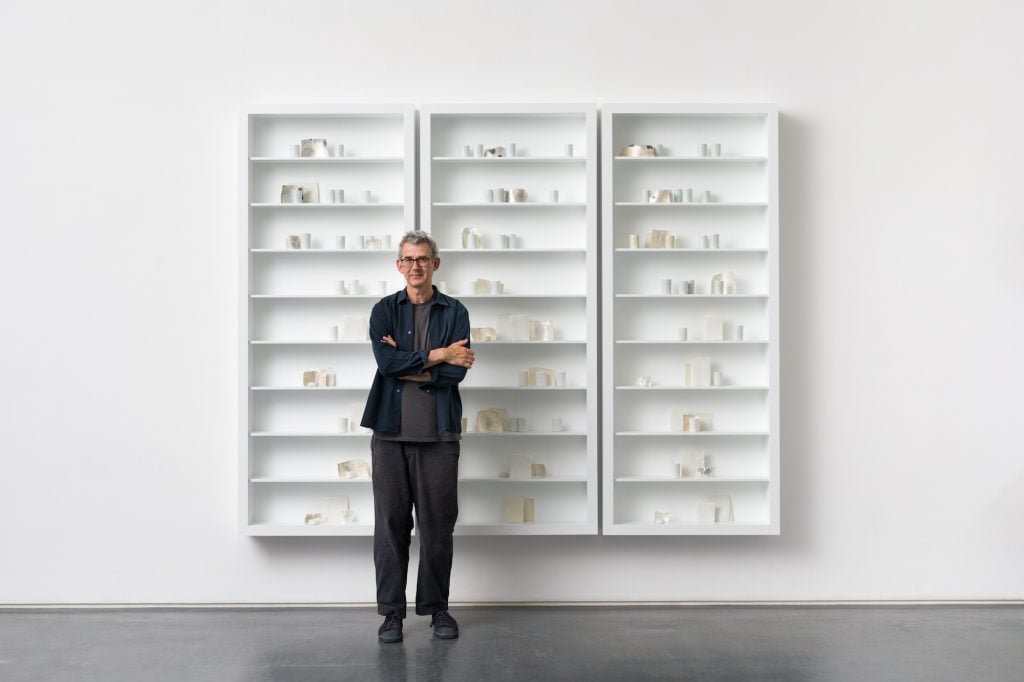
The artist is both a creator and a curator in a new show in Norway that pays homage to ceramicist master Axel Salto.

Eileen Kinsella

Artist and ceramicist Edmund de Waal is perhaps best known to his fans as the author of the 2010 bestselling book The Hare with Amber Eyes, which also had a dedicated solo show of the same name at the Jewish Museum in New York in 2022.
When de Waal inherited a collection of more than 250 tiny Japanese wood and ivory carvings, known as netsuke, he was curious about who had owned them previously and how the collection had survived. He embarked on a deep dive about both the netsuke and his ancestors, the Ephrussi family, a wealthy banking family who eventually became victims of the Nazis. The tale of how the netsuke were hidden from Nazis in Vienna is a captivating one that is skilfully captured in both the 2010 book and the more recent museum show.
Now de Waal is part of another intriguing and ambitious project, taking on the role of curator and co-artist of a show at Kunstsilo, a just-opened waterfront museum in Norway. “Playing with Fire, ” offers a unique presentation of his own works alongside those of the Danish ceramic pioneer Axel Salto. It’s the result of an international collaboration between de Waal, Kunstsilo, and CLAY Museum of Ceramic Art Denmark.
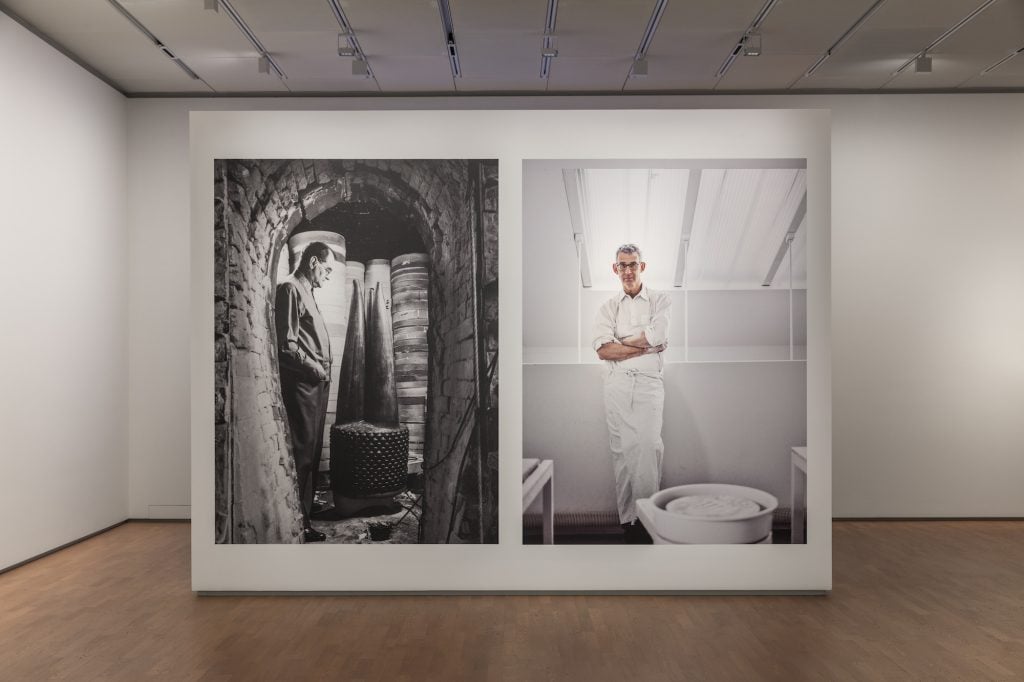
Installation view of “Playing With Fire” at Kunstsilo, Norway. Axel Salto and Edmund de Waal ©Tor Simen Ulstein
De Waal created an installation based on two significant Salto collections: the Tangen Collection and the Royal Copenhagen Collection at CLAY. In the installation, de Waal reflects on Salto’s significance and the timelessness of the artworks.
We caught up with de Waal to discuss the inspiration for the show and hear about his working methodology while also getting a glimpse inside his London studio.
This show at Kunstsilo in Kristiansand seems fresh and innovative on so many levels, not least of which is that it is the first exhibition at this museum. How did the concept develop, and were you part of the planning and consideration of putting your work side by side with Axel Salto?
It arrived so organically from conversations over many years with Nicolai Tangen who has such a passion for Salto. I had written—over twenty years ago—about Salto and anxiety, how his pots examine the moment when one thing becomes another. So I was a huge fan already. And the idea of an exhibition built around the shared concern with metamorphosis was irresistible.
Is this the first time you are playing dual roles of both artist and curator? What are the best parts of that and what are the challenges of that?
Over the years I seem to have worked in this way many times. If I look back at projects with Morandi, with the Walter Benjamin archive in Berlin, with the collections of the Kunsthistorisches Museum in Vienna, the Frick in New York, there is a common thread of a deep need to look further into the things that I care about most. It is a privilege of course. The challenge is to make projects that illuminate a collection, an archive, a place rather than just being another contemporary artist landing heavily and awkwardly, saying “Look at me.” How can you bring a new perspective? How can you work in the Ghetto in Venice where there are 600 years of lived experience that matters?
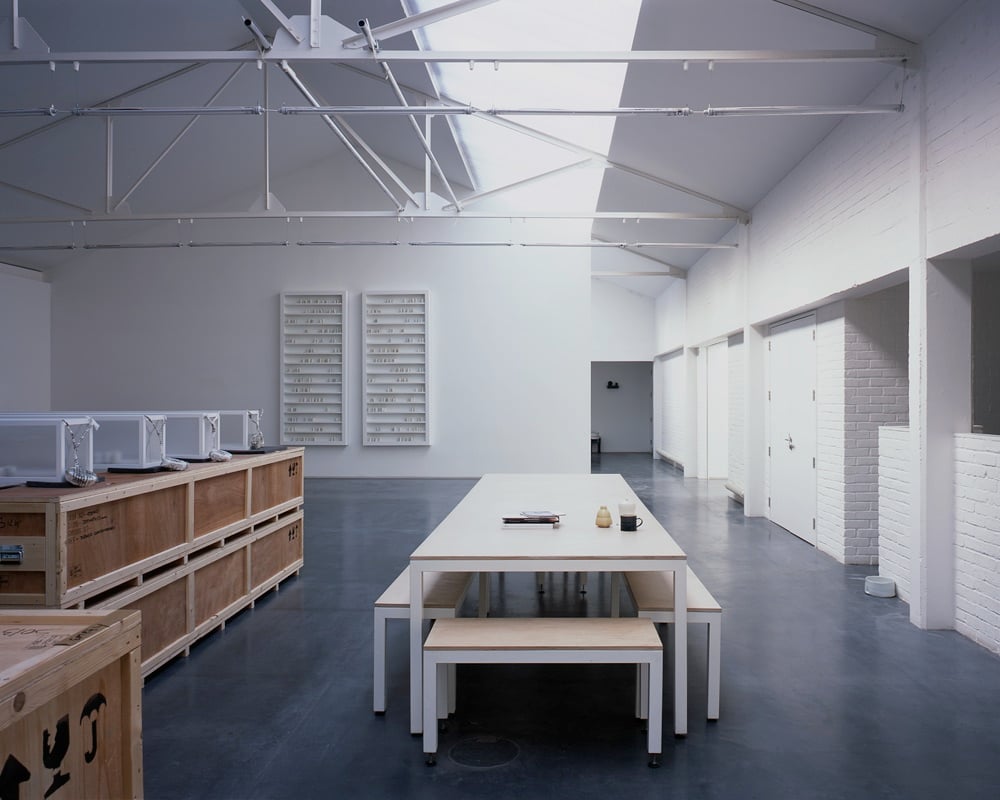
The studio of Edmund de Waal
Photo: Hélène Binet
Tell us about your studio. How does it compare to other studios you’ve had?
It is an old gun factory. When we moved in, it still had boxes with danger written on them—which pleased me greatly. Working with the architects DSDHA it has been converted into a rather beautiful, free-flowing space. You can move between books and pots. Lots of space – we built a pavilion here earlier in the year. I feel incredibly lucky.
What are you working on right now?
Well there the floor is covered with tape to show the scale of a library we are making for a project in 2025. And there is a huge black vessel from the series I made for Berlin in the summer. A sort of impetus for the next series that I am making in a workshop in Denmark. And then there are tests everywhere….

The studio of Edmund de Waal
Photo: Hélène Binet
What kind of atmosphere do you prefer when you work?
It is music that is the bedrock of the studio. And I like to listen in depth so my poor studio team gets to hear a new recording of the Goldberg Variations by Bach forty times… They rather suffered from my Morton Feldman passion. And then there are the books of course. How can I possibly work without books—reading them, making them, curating them. And writing them. A new one is starting so the drift of new books in will soon become a tide…
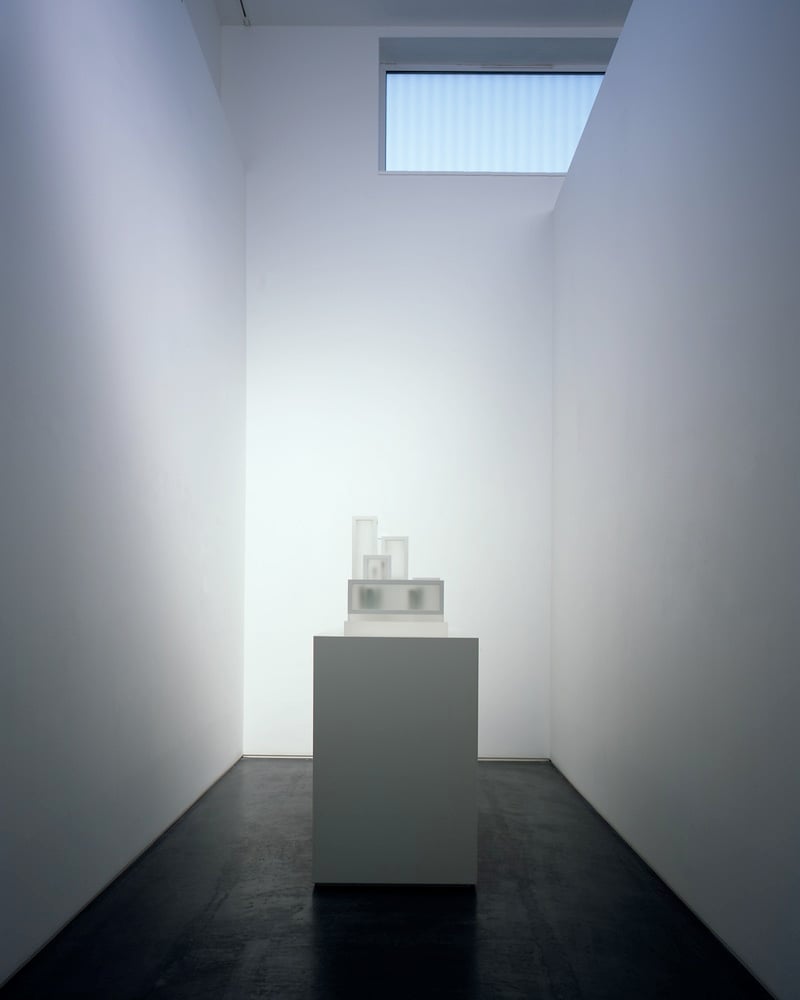
The studio of Edmund de Waal
Photo: Hélène Binet
When you feel stuck while preparing for a show, what do you do to get unstuck?
A great question. I am lucky in that I make things when I am stuck with writing. And write things when I cannot make.
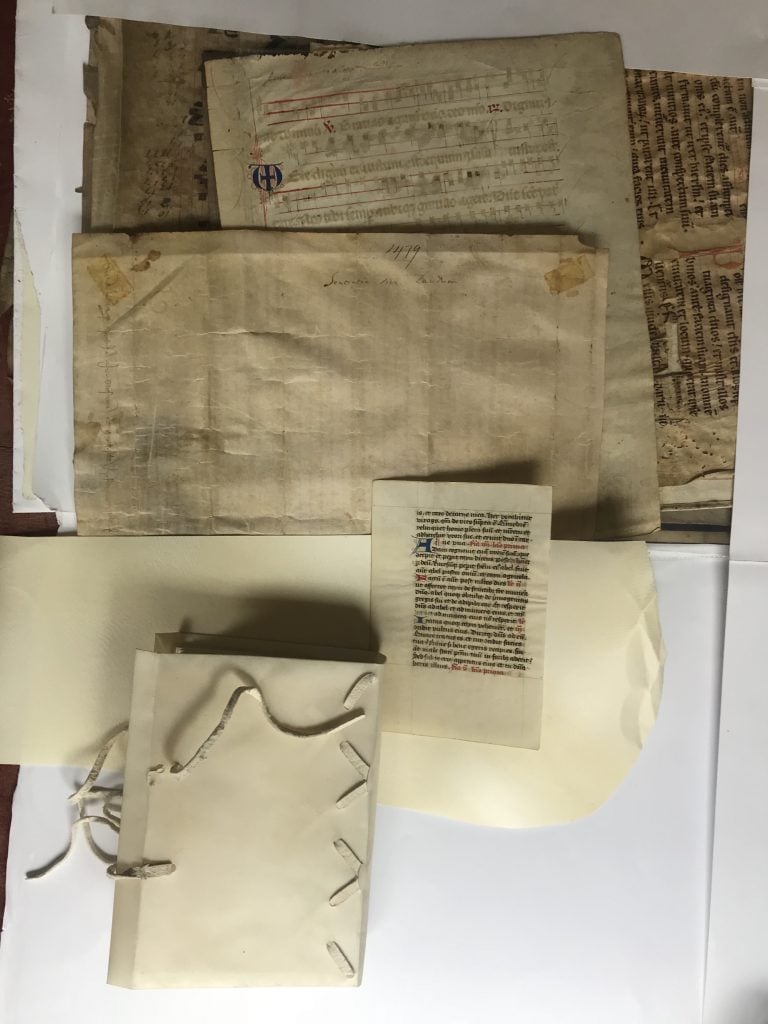
Medieval manuscript fragments
Photo: Edmund de Waal studio
What tool or art supply do you enjoy working with the most, and why?
I bought scraps of medieval illuminated manuscript written on vellum and parchment some years ago. A few pieces were bound into an artist’s book I made for Ivorypress in Madrid and now the rest are becoming part of a new work. Watch this space.
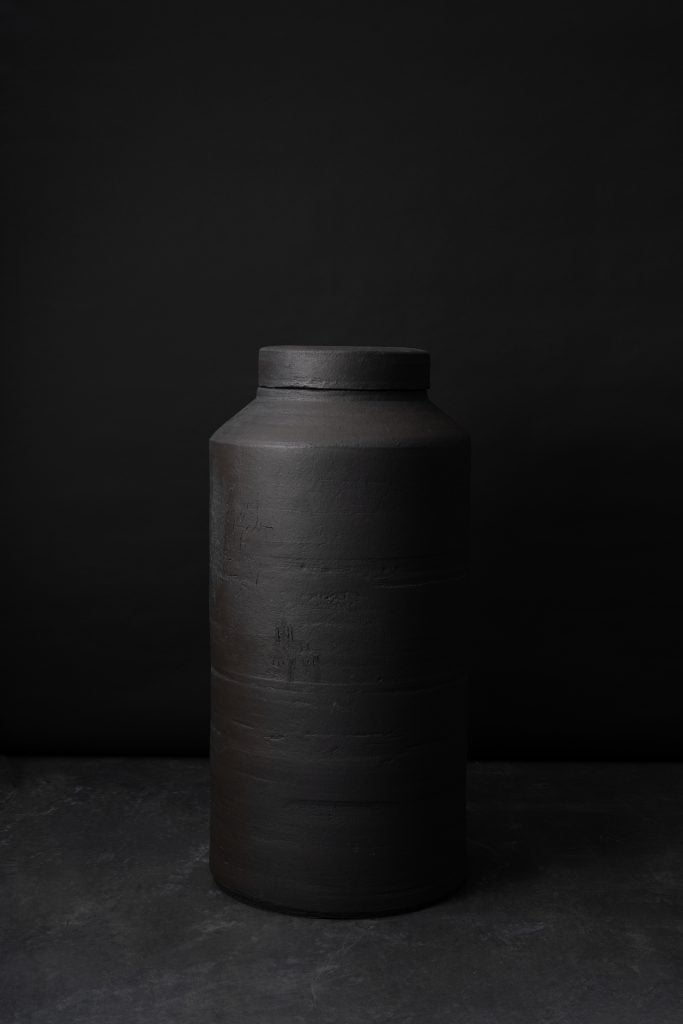
Edmund de Waal, elegie, IV (2023)
Photo: Alzbeta Jaresova
What do you hope audiences take away from “Playing With Fire”?
Joy. And pleasure at encountering an artist many people will not know. Salto is truly wonderful.
“Playing With Fire,” runs through March 2, 2025 at Kunstsilo in Kristiansand Norway.